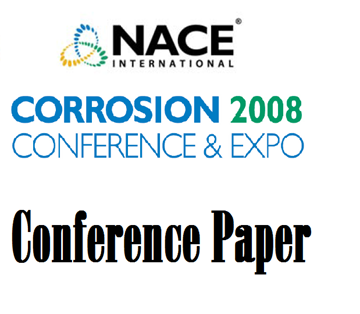Search
External Stress Corrosion Cracking Of In-Situ Carbon Steel Pipelines
Also Purchased
Expected Service Life And Cost Considerations For Maintenance And New Construction Protective Coating Work
Product Number:
51322-17616-SG
Publication Date:
2022
$20.00
Failure Analysis Of Hydrotested 12-Inch Type 304 SS Pipe Sections
Product Number:
51322-17852-SG
Publication Date:
2022
$20.00
08265 Modeling of Carbonate-Bicarbonate Stress Corrosion Cracking of Pipeline Steels
Product Number:
51300-08265-SG
ISBN:
08265 2008 CP
Publication Date:
2008
$20.00




